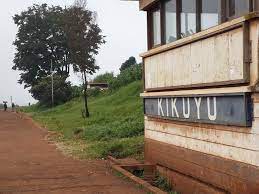History Of
Kikuyu Constituency
Kikuyu Constituency is an electoral constituency in Kenya. It is one of twelve constituencies in Kiambu County. The constituency was established for the 1963 elections. From 1988 elections to 2002 elections it was known as Kabete Constituency. With the new demarcation of constituencies by the Independent Electoral and Boundaries Commission (IEBC), the constituency was split into two and now we have Kikuyu Constituency and Kabete Constituency.


Growth
Kikuyu Constituency has registered rapid growth in the recent past due to the demand for housing which the construction sector is rapidly trying to match. More and more housing units are being put up especially on plots with close proximity with the road. The area provides a conducive area for habitation and due to the elaborate infrastructure and proximity to Nairobi where most individuals work. The region has a mixture of urban and semi-urban lifestyle which makes it possible for people to access food easily from surrounding farmers as well as access other social amenities with ease. Other constituencies within Kiambu county are; Limuru, Lari, Gatundu North, Gatundu South, Juja, Thika Town, Ruiru Githunguri, Kiambu and Kiambaa.
Origins
Kikuyu Town in Kenya has a rich history that spans centuries, evolving from its early roots to become a significant center within Kiambu County. Its historical narrative is deeply intertwined with the colonial era and the traditional heritage of the Kikuyu people.
Before the arrival of colonial powers, the area that now encompasses Kikuyu Town was inhabited by the Agikuyu community, a prominent Bantu ethnic group. The lush, fertile lands attracted settlers due to its agricultural potential, prompting the establishment of settlements that would later coalesce into what is now Kikuyu Town.
The late 19th and early 20th centuries saw the influx of European colonial missionaries and settlers into the region. Missionary activities, particularly those led by the Church of Scotland and the Church Missionary Society, played a pivotal role in shaping Kikuyu's early development. The establishment of mission stations brought about significant changes, introducing Western education, Christianity, and modern agricultural techniques to the local population.
Kikuyu Town gradually emerged as a hub for missionary and colonial activities. It became a center for education, hosting institutions like the famous Alliance High School, which played a crucial role in nurturing the intellectual and leadership capabilities of many Kenyan luminaries.
The town's strategic location along the Nairobi-Naivasha highway further contributed to its growth and importance as a trading post. Over time, Kikuyu evolved into a bustling commercial center, serving both local residents and travelers passing through the region.
However, Kikuyu's history is not without its challenges. It bore witness to the struggles and resistance of the local communities against colonial rule, including the Mau Mau uprising—a pivotal moment in Kenya's fight for independence.
In the post-independence era, Kikuyu Town continued to thrive, witnessing urbanization and infrastructural developments that transformed it into a modern urban center while still retaining elements of its historical and cultural heritage.
Today, Kikuyu Town stands as a vibrant reflection of its storied past, blending tradition with modernity and serving as a testament to the resilience and evolution of Kenya's history and heritage.
